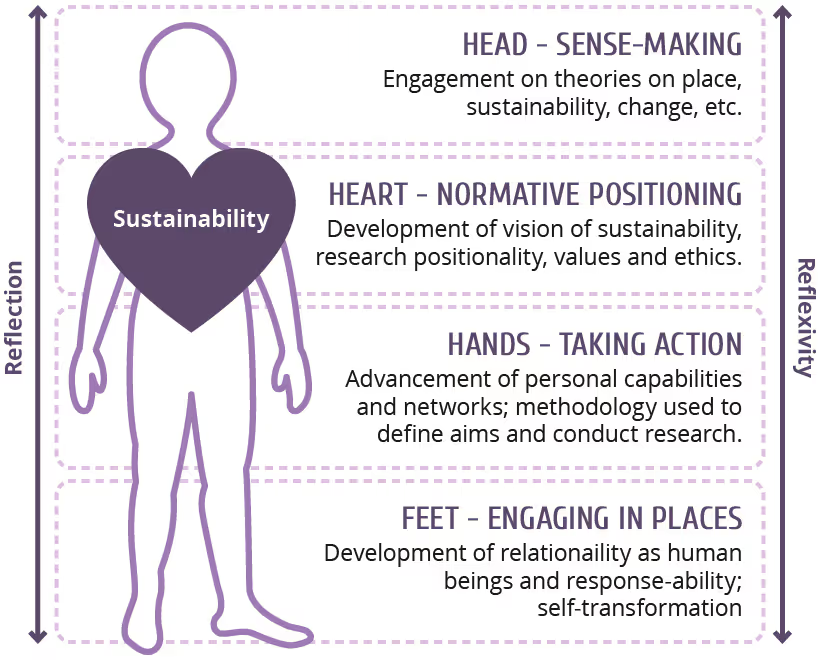Integrating brains, hearts, hands & feet
In line with much feminist critique, our Care-full Scholarship MOOC seeks to bring both subjective and objectives ways of knowing the world, moving away from science as an alienated, abstract, and de-personalised field. Thus, our hope is to engage not only our rational thinking, but also our hearts, hands, and feet, and possibly integrate them all.
In an open access article published in 2019, Horlings et al. propose this figure, titled ‘Embodied researcher’, which we offer here as a source of reflection and critical thinking. It may or may not resonate with your reality, and in a moment we invite you to adapt it in the way you see most fit to your case:

As explained by the authors, the figure portrays the researcher “in all their 'wholeness' and explains the manner in which they carry out research through their place engagement [i.e. engagement to specific contexts], normative assumptions towards sustainability [or other topics if you are working on something else], theoretical positioning and methodological choices.” (Horlings et al. 2020: 479)
“Reflection” and “reflexivity” are considered as “something that is present throughout the research process affecting the four dimensions of the body of the researcher”; the authors also explain that an embodied researcher ideally practices research informed by the heart, which acts as an inner compass, being the source of the visions, wishes, commitment, passion and positionality that shape how research is practiced.
These visions and wishes may change throughout the research, via a process of self-questioning, sense-making and self-transformations, inspired by the theoretical concepts (brain), but also by their lived experiences and by engaging with the realities under study/collaboration (hands and feet).
The hands represent the skills, capabilities, networks we develop as engaged scholars, and the methods we choose to implement.
The feet represent the embeddedness and situatedness in specific contexts of research and practice.
The full article can be accessed on this link.




